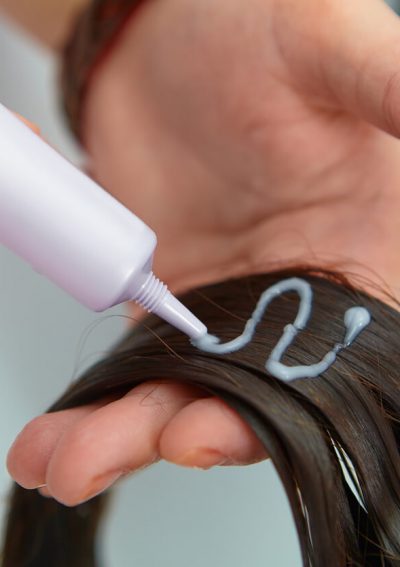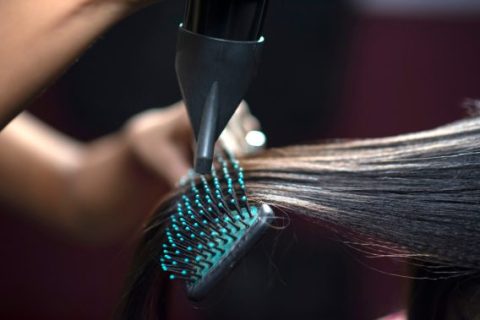Chemical Hair Straightener Lawsuits
Women may file chemical hair straightener lawsuits if they used the products and later developed uterine, endometrial and ovarian cancer. Lawsuits say chemical straighteners and relaxers increase the risk of cancer, and that manufacturers failed to warn the public.

Latest Chemical Hair Straightener Lawsuit Updates
As of July 2024, there were 8,192 hair straightener lawsuits pending in multidistrict litigation in the U.S. District Court of the Northern District of Illinois. Litigation in MDL 3060 is in the early stages, and lawyers expect many more people to file hair straightener lawsuits.
Hair Relaxer Lawsuit Status
- July 2024: The FDA delayed a proposed ban on formaldehyde in hair care products, with the timeline for its release now uncertain. This follows several rescheduled target dates and ongoing health concerns linking formaldehyde to cancer. Advocates have long pushed for this ban to protect consumers and salon workers.
- June 2024: L’Oreal, SoftSheen-Carson and Strength of Nature lost an appeal to dismiss a Kiara Burroughs’ chemical hair relaxer lawsuit that claims the companies failed to warn the public about toxic chemicals in their products that can cause uterine fibroids. Burroughs’ case is a Georgia state court case. So far, there aren’t any trial dates for the cases in the Illinois MDL. Our legal partners have told us discovery is still ongoing, but the Court appointed Professor Maura R. Grossman to serve as special master in the MDL. Part of Rowland’s duties will be to assist in the discovery process and make recommendations to the Court, according to the court documents we researched.
- November 2023: Lawyers on both sides are trying to determine how discovery will be conducted.
- October 2023: Extensive news coverage broke of a proposed FDA rule change to ban the use of formaldehyde and formaldehyde-releasing chemicals in hair straighteners, bringing renewed attention to health risks and legal responsibility, and prompting more case filings.
- August 2023: There was a reduction in pending cases from 295 to 275, but since August the number of active cases has grown significantly.
- February 2023: The Panel on Multidistrict Litigation transferred hair straightener lawsuits to the newly formed MDL in the Northern District of Illinois.
- January 2023: Tamara Sigars filed a lawsuit that claimed L’Oreal and other companies’ hair relaxers caused her to develop ovarian cancer.
When the Illinois MDL was first formed, it started with more than a dozen individual injury cases and has since grown to include more than two hundred plaintiffs. Lawyers expect this litigation to grow because millions of people used these products over the years.
Why Are People Filing Chemical Hair Straightener Lawsuits?
Women are filing lawsuits against chemical hair straightener companies after a 2022 National Institutes of Health study found women who used chemical hair straighteners had a greater risk of developing uterine cancer. Defendants include L’Oreal, Soft Sheen Carson, Strength of Nature and others. Currently, the litigation is focused on uterine, endometrial and ovarian cancer, though this could later include more injuries if more evidence links straighteners to them.
The study, published in the Journal of the National Cancer Institute, found women who used chemical straighteners more than four times a year had more than double the risk of uterine cancer. Studies also linked chemical hair relaxers to increased uterine fibroid and endometriosis risk. Uterine cancer rates among Black women have been rising, and researchers say chemical straighteners may be to blame. About 60% of women in the study who reported using hair straighteners were Black women.
People are filing lawsuits for compensation including medical bills, pain and suffering and lost wages. Some women who filed lawsuits have had to have hysterectomies to treat uterine cancer, preventing them for having children.
Status of Chemical Hair Straightener Lawsuits
In November 2022, plaintiffs’ lawyers asked the U.S. Judicial Panel on Multidistrict Litigation to consolidate all of the chemical hair straightener lawsuits in multidistrict litigation in Illinois. By February 2023, the cases were consolidated into MDL number 3060, IN RE: Hair Relaxer Marketing, Sales Practices, and Products Liability Litigation in the Northern District of Illinois.
As of July 2024, there were 8,192 lawsuits pending in the MDL. In March 2023, there were only 74 cases. Lawyers expect the litigation to continue growing. In addition to the product liability cases in the MDL which demand compensation for injuries, manufacturers also face chemical hair straightener class action lawsuits demanding a refund for the purchase price of the products.
There have been no settlement or jury verdicts in these cases yet, though some lawyers estimate a chemical hair straightener settlement could be anywhere from $100,000 to $1.5 million because of the cancer claims. Experts have based these figures on similar product liability cancer claims.
Health Claims in Chemical Hair Straightener Lawsuits
Chemical hair straightener lawsuits claim chemicals in these products have caused women to develop uterine cancer, breast cancer, endometriosis and fibroids. Though, many of lawsuits focus on breast cancer, lawyers are accepting cases for these four conditions. Studies have linked endocrine disrupting chemicals, or EDCs, in chemical hair straighteners to various side effects and health problems such as cancer, endometriosis and uterine fibroids. The risk of these conditions goes up with frequent use, and many plaintiffs in chemical hair straightener lawsuits have been using these products for years.
Researchers define frequent use as more than four times a year, or every five to eight weeks. Dangerous chemicals in hair straighteners include phthalates, parabens and a very toxic chemical called DEHP.
Uterine Cancer
Hermania E. Bates filed a chemical hair straightener lawsuit against L’Oreal, Soft Sheen Carson and other hair straightener manufacturers in February 2023 after she developed uterine cancer. According to her lawsuit, “Ms. Bates’ cancer diagnosis was directly and proximately caused by her regular and prolonged exposure to phthalates and other endocrine disrupting chemicals found in Defendants’ hair care products.”
In the 2022 NIH study, researchers looked at data from 33,947 women aged 35 to 74. Women who reported using hair straighteners had higher incidence rates of uterine cancer. Women who used the products more than four times in 12 months had more than double the risk.
Endometrial Cancer
Some women who filed claims in hair straightener lawsuits claimed endocrine disrupting chemicals in hair straighteners and relaxers led them to develop endometriosis and endometrial cancer.
Researchers believe endometriosis may be caused by hormonal issues. Phthalates, parabens and EDCs like those found in chemical hair straighteners and hair dye could disrupt hormones and increase the risk of endometriosis, according to some studies. One study published in 2018 in the Journal of Human Reproductive Sciences found high levels of phthalates in women diagnosed with endometriosis. Lawsuits claims these chemicals can also increase the risk of endometrial cancer.
Uterine Fibroids
Some lawsuits have also claimed uterine fibroids in addition to uterine cancer. According to claims in chemical hair straightener lawsuits, “uterine fibroids, or uterine leiomyomata, are associated with phthalate metabolites and BPA found in hair care products.” A November 2022 study by Northwestern Medicine found women with high exposures to phthalates such as DEHP and its metabolites have a higher risk of developing symptomatic fibroids. Researchers found DEHP activates certain hormone receptors and causes fibroid tumor growth.
Prior to this study, researchers established a link between uterine fibroids and phthalates. Scientists also discovered DEHP can pass from a mother to a baby and gradually release from consumer products into indoor environments.
What Brands Have Been Named in the Chemical Hair Straightener Lawsuits?
Plaintiffs have filed lawsuits against L’Oreal and other hair relaxers makers and popular brands such as Soft & Beautiful and Dark and Lovely.
“Defendants knew or should have known that their hair relaxer products were dangerous and defective because they contain highly toxic EDCs and they manufactured, marketed and sold them anyway,” lawsuits claim.
- Strength of Nature Global LLC
- Soft & Beautiful
- Motions
- TCB Naturals
- Just for Me
- Namaste
- Olive Oil Girls
- L’Oreal
- Dark and Lovely
- Optimum
In addition to individual injury lawsuits, defendants also face a class action in Illinois court that demands a refund for the full purchase price of the products. The lawsuits claim, “The presence of EDCs in Defendants’ Toxic Hair Straightener was not disclosed in the products’ label, in violation of state and federal law.”
Who Qualifies to File a Chemical Hair Straightener Lawsuit?
You may qualify to file a chemical hair straightener lawsuit if you used a chemical hair straightener or relaxer and were later diagnosed with uterine cancer, breast cancer, uterine fibroids or endometriosis. Only a lawyer can tell you if you qualify, so make sure you speak to an attorney right away. There may be time limits to file your claim.
When you speak to a lawyer, they may ask you questions about your experience with chemical hair straighteners. Have any receipts and information about your diagnosis available. If you can’t get these, a lawyer may be able to help you obtain medical records.
11 Cited Research Articles
Consumernotice.org adheres to the highest ethical standards for content production and references only credible sources of information, including government reports, interviews with experts, highly regarded nonprofit organizations, peer-reviewed journals, court records and academic organizations. You can learn more about our dedication to relevance, accuracy and transparency by reading our editorial policy.
- Lovelace, B. and Essamuah, Z. (2024, July 19). FDA Once Again Pushes Back Proposal to Ban Cancer-Linked Formaldehyde in Hair Relaxers. Retrieved from https://www.nbcnews.com/news/nbcblk/fda-delays-ban-formaldehyde-hair-products-cancer-timeline-uncertain-rcna162565
- U.S. Judicial Panel on Multidistrict Litigation. (2024, July 1). MDL Statistics Report - Distribution of Pending MDL Dockets by District. Retrieved from https://www.jpml.uscourts.gov/sites/jpml/files/Pending_MDL_Dockets_By_Actions_Pending-July-1-2024.pdf
- Office of Information and Regulatory Affairs. (2023). Use of Formaldehyde and Formaldehyde-Releasing Chemicals as an Ingredient in Hair Smoothing Products or Hair Straightening Products. Retrieved from https://www.reginfo.gov/public/do/eAgendaViewRule?pubId=202304&RIN=0910-AI83
- U.S. Judicial Panel on Multidistrict Litigation. (2022, November 15). In Re: Hair Relaxer Products Liability Litigation. Memorandum in Support of Plaintiffs’ Motion for Transfer of Actions Pursuant To 28 U.S.C. § 1407 for Coordinated or Consolidated Pretrial Proceedings. Retrieved from https://www.aboutlawsuits.com/wp-content/uploads/2022-11-15-MDL-Motion.pdf
- Samuelson, K. (2022, November 14). Uterine fibroid growth activated by chemicals found in everyday products. Retrieved from https://news.northwestern.edu/stories/2022/11/uterine-fibroid-growth-activated-by-chemicals-found-in-everyday-products/
- U.S. District Court, Northern District of Illinois. (2022, November 3). Class Action Complaint. Retrieved from https://www.aboutlawsuits.com/wp-content/uploads/2022-11-3-darklovely-class-action.pdf
- Howard, J. (2022, October 24). US woman files lawsuit against L’Oréal, claiming chemical hair straightening products are linked to her cancer. Retrieved from https://www.cnn.com/2022/10/24/health/hair-straightening-products-lawsuit
- U.S. District Court, Northern District of Illinois. (2022, October 21). Mitchell v. L’Oreal USA, Inc. et al. Complaint. Retrieved from https://www.lawsuit-information-center.com/files/2022/10/Hair-Relaxer.pdf
- Chang, C-J et al. (2022, October 17). Use of Straighteners and Other Hair Products and Incident Uterine Cancer. Retrieved from https://pubmed.ncbi.nlm.nih.gov/36245087/
- National Institute of Environmental Health Studies. (2019, December 4). Permanent Hair Dye and Straighteners May Increase Breast Cancer Risk. Retrieved from https://www.niehs.nih.gov/news/newsroom/releases/2019/december4/index.cfm
- Nazir, S. et al. (2018). Women Diagnosed with Endometriosis Show High Serum Levels of Diethyl Hexyl Phthalate. Retrieved from https://www.ncbi.nlm.nih.gov/pmc/articles/PMC6094529/
Calling this number connects you with a Consumer Notice, LLC representative. We will direct you to one of our trusted legal partners for a free case review.
Consumer Notice, LLC's trusted legal partners support the organization's mission to keep people safe from dangerous drugs and medical devices. For more information, visit our partners page.
866-461-6220




